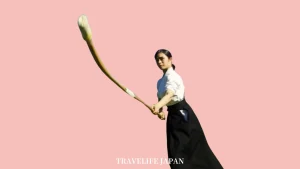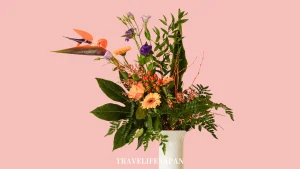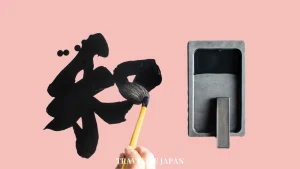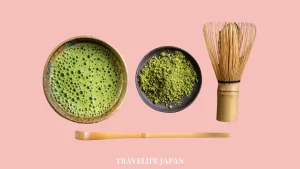What are Japan’s major holidays and events? From festive New Year celebrations to the reflective moments of seasonal equinoxes, Japan’s calendar is filled with traditions that showcase its rich culture and deep-rooted customs. These occasions highlight the country’s history, spirituality, and communal values, offering a vibrant look into its heritage.
Holiday Calendar
Japan has 16 national holidays, making it one of the countries with the most public holidays in the world (the world average is 10 national holidays). This abundance reflects the nation’s deep respect for tradition, culture, and the importance of work-life balance. These holidays range from New Year celebrations to honoring the elderly and children, emphasizing family, nature, and national history. When compared globally, Japan ranks high in the number of public holidays, surpassed by a few countries like Cambodia and Sri Lanka, which have more. These holidays play a vital role in the social and cultural life of Japan, offering regular intervals for rest, celebration, and reflection.
| 1st January | New Year’s Day |
| 2nd Monday of January | Coming of Age Day |
| 11th of February | National Foundation Day |
| 23rd of February | The Emperor’s Birthday |
| 20th of March | Vernal Equinox |
| 29th of April | Showa Day |
| 3rd of May | Constitution Memorial Day |
| 4th of May | Greenery Day |
| 5th of May | Children’s Day |
| 3rd Monday of July | Sea Day |
| 11th of August | Mountain Day |
| 3rd Monday of September | Respect for the Aged Day |
| 22nd of September | Autumnal Equinox |
| 2nd Monday of October | Sports Day |
| 3rd of November | Culture Day |
| 23rd of November | Labor Thanksgiving Day |
Introducing Japanese Major National Holidays
Oshogatsu (New Year)
お正月|おしょうがつ|1st of January
Oshogatsu, the Japanese New Year, is a cornerstone of Japan’s cultural heritage, celebrated with great enthusiasm and joy. Spanning the first few days of January, it’s a time when families come together, embracing traditions that date back centuries. Homes are adorned with kadomatsu and shimekazari, pine and bamboo decorations symbolizing longevity and renewal. The ritual of hatsumode, the first temple or shrine visit of the year, is integral, as people pray for health and happiness. Traditional foods like osechi-ryori and toshikoshi soba are savored, and the exchange of nengajo (New Year cards) and giving of otoshidama (gift money to children) fosters a sense of community and goodwill. Shogatsu is not just a celebration but a reflection of Japan’s rich cultural tapestry, ushering in the new year with hope and festivity.
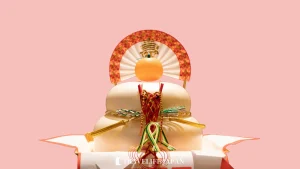
Seijin-no-hi (Coming-of-Age Day)
成人の日|せいじんのひ|2nd Monday of January
Seijin-no-hi, or Coming-of-Age Day, is a significant Japanese holiday celebrated on the second Monday of January, marking the transition of young people into adulthood at the age of twenty. This national holiday is a vibrant and joyous occasion, symbolizing new responsibilities and freedoms, including the right to vote, and legal consumption of alcohol and tobacco. Young women often wear elaborate, long-sleeved kimonos called furisode, showcasing their beauty and elegance, while men typically dress in traditional hakama or suits. Local governments host ceremonies called seijin-shiki, where speeches and gifts are presented to the new adults, acknowledging their entry into society as full-fledged members. This day is not only a personal milestone for the youth but also a cultural celebration, reflecting Japan’s deep respect for maturity and societal contribution.
Setsubun (The Eve of the First Day of Spring)
節分の日|せつぶんのひ|3rd of February
Setsubun, traditionally celebrated on February 3rd, marks the eve of the first day of spring in Japan, heralding the arrival of the new season. This festival is rooted in the ancient custom of mamemaki, a ritual symbolizing the expulsion of evil spirits and the welcoming of good fortune. During mamemaki, roasted soybeans are thrown by family members either in temples, shrines, or at home, chanting “Oni wa soto! Fuku wa uchi!” (“Demons out! Luck in!”). The ritual signifies purging negativity and bringing in happiness. Additionally, it’s customary to eat an age-appropriate number of soybeans, symbolizing health and longevity for the year ahead. Setsubun blends Shinto and Buddhist traditions, reflecting Japan’s rich cultural tapestry and its people’s reverence for nature’s cycles.
Kenkoku-kinen-no-hi (National Foundation Day)
建国記念の日|けんこくきねんのひ|11th of February
Every February 11th, Japan celebrates its National Foundation Day, marking the founding of the nation and the ascent of Emperor Jimmu, its first emperor. This day, steeped in history and patriotism, acknowledges Japan’s rich past. Initially tied to the Chinese lunisolar calendar’s New Year, it shifted to February 11th with the adoption of the Gregorian calendar. Revived in 1966 post-World War II, it features patriotic parades and visits to significant sites like Kashihara Shrine in Nara, believed to be Emperor Jimmu’s ascension site, reflecting Japan’s enduring connection to its historical roots.
Tenno-tanjobi (The Emperor’s Birthday)
天皇誕生日|てんのうたんじょうび|23rd of February
Tennō Tanjōbi, the Emperor’s Birthday, is a significant public holiday in Japan, reflecting the nation’s deep respect for the Imperial family. The date changes with each Emperor; for instance, it was December 23rd during Emperor Akihito’s reign and is now February 23rd under Emperor Naruhito. The Imperial Palace in Tokyo, typically closed, opens for public celebration. Citizens and tourists gather to see the Imperial family’s balcony appearance, waving Japanese flags and chanting traditional cheers. This day symbolizes national unity and reverence for the Chrysanthemum Throne, underscoring the Emperor’s role as a symbol of the state and the people’s unity.
Hina-matsuri (Doll’s Festival)
ひな祭り|ひなまつり|3rd of March
Hina-matsuri, celebrated on March 3rd, is a cherished Japanese festival dedicated to the health and happiness of young girls. Also known as the Doll’s Festival, families display a special set of ornamental dolls, representing the Emperor, Empress, and their court, arranged on a tiered platform draped in red. These hina dolls are dressed in Heian period court attire, and the display is often passed down through generations. Accompanying these are peach blossoms, rice cake cubes (hishimochi), and white sake, symbolizing purity and growth. The festival is a blend of tradition and affection, showcasing Japan’s deep-rooted cultural value of nurturing and protecting its children. It’s a day when families pray for the prosperity and well-being of their daughters, celebrating with special dishes like chirashi sushi and clam soup, in a festive and warm atmosphere.
Shunbun-no-hi (Vernal Equinox Day)
春分の日|しゅんぶんのひ|20th or 21st of March
Shunbun-no-hi, or Vernal Equinox Day, observed around March 21st, is a significant event in Japan, marking the arrival of spring and symbolizing rebirth and renewal. It’s a day when day and night are almost equal in length, deeply rooted in both Shinto and Buddhist traditions. This period, also known as Haru-no-Higan, encourages people to connect with nature and contemplate the transience of life. Many Japanese visit their family graves, paying respects and cleaning the tombstones, a practice known as ohigan. It’s a time for spiritual reflection, appreciating nature’s balance, and family reunions. Seasonal customs include enjoying botamochi, a sweet rice cake, symbolizing the unity of nature and humanity. Shunbun-no-hi beautifully illustrates the harmony and respect for nature ingrained in Japanese culture.
Higan
お彼岸|おひがん
Higan, observed during the equinoxes in spring and autumn, is a period deeply ingrained in Japanese Buddhist traditions. Spanning seven days centered around the equinox, Higan translates to “the other shore,” symbolizing the transition from suffering to enlightenment. This period encourages spiritual reflection, focusing on the six perfections of Buddhism: giving, morality, patience, effort, meditation, and wisdom. A key custom is visiting family graves, a practice known as ohakamairi, to honor ancestors and cleanse their resting places, reflecting a deep reverence for family ties and the cycle of life. People also offer prayers and flowers, and make offerings of botamochi in spring and ohagi in autumn, sweet rice balls that symbolize the connection between the physical and spiritual worlds. Higan serves as a poignant reminder of life’s impermanence and the importance of spiritual and familial bonds in Japanese culture.
Golden Week
ゴールデンウィーク
Golden Week, a bustling period between April 29th and May 5th, is Japan’s longest break, featuring four national holidays. Showa Day (Shōwa no Hi) starts the week, honoring former Emperor Hirohito and reflecting on Japan’s history. Constitution Memorial Day (Kenpō Kinenbi) on May 3rd celebrates Japan’s post-war democracy. Greenery Day (Midori no Hi), inspired by Hirohito’s love for nature, promotes environmental appreciation. The week culminates with Children’s Day (Kodomo no Hi), a fusion of former separate boys’ and girls’ days. This period is a whirlwind of cultural festivities, nature appreciation, and family-oriented celebrations across Japan.
Kodomo-no-hi (Children’s Day)
子供の日|こどものひ|5th of May
Kodomo-no-hi, celebrated on May 5th, is a vibrant and joyful Japanese holiday dedicated to the health, growth, and happiness of children, especially boys. Originally known as Tango-no-Sekku, it has evolved to honor all children and celebrate their potential. The most iconic symbol of this day is the koi-nobori, colorful carp-shaped windsocks flown outside houses, representing strength and perseverance. Families display samurai dolls and helmets, symbolizing courage and valor. Traditional foods are also an integral part of the celebration, with kashiwa-mochi (oak leaf-wrapped rice cakes) and chimaki (sweet rice dumplings) being popular treats. Kodomo-no-hi is not just a festive day, but it also reflects the deep cultural emphasis on the well-being and successful future of the younger generation in Japan.
Tanabata (The Star Festival)
七夕|たなばた|7th of July
Tanabata, celebrated on July 7th, is a romantic and colorful festival in Japan, based on a poignant Chinese legend about star-crossed lovers, Orihime and Hikoboshi, represented by the stars Vega and Altair, respectively. According to the tale, these lovers, separated by the Milky Way, are allowed to meet just once a year on this day. Tanabata is marked by the writing of wishes on tanzaku, small strips of paper in various colors, which are then hung on bamboo branches. The streets and homes are adorned with these wish-filled bamboo, creating a vibrant and hopeful atmosphere. Festivities often include parades, traditional games, and wearing yukata, a light summer kimono. The festival symbolizes hope and dreams, with people of all ages participating in this beautiful tradition, expressing their heartfelt desires and aspirations.
Tsukimi (Moon Viewing)
お月見|おつきみ
Tsukimi, or Moon Viewing, is a traditional Japanese festival held in autumn, specifically on the 15th night of the 8th lunar month, celebrating the beauty of the full moon. Rooted in ancient Chinese traditions, it has been a part of Japanese culture since the Heian period. People gather to admire the harvest moon’s beauty, often from gardens or balconies, creating a serene and contemplative atmosphere. Key elements include the decoration of viewing spots with susuki (pampas grass) and the offering of tsukimi dango (rice dumplings), symbolizing the full moon. Seasonal fruits and Japanese silver grass are also displayed, and special dishes are prepared. Tsukimi is a moment of quiet reflection, appreciating nature’s beauty, and a time to pray for a good harvest and prosperity. The celebration embodies the Japanese appreciation of subtle beauty and the changing seasons.
Shubun-no-hi (Autumn Equinox Day)
秋分の日|しゅうぶんのひ|22nd or 23rd of September
Shubun-no-hi, or Autumn Equinox Day, observed around September 23rd, is a poignant moment in the Japanese calendar, marking the transition from summer to autumn. This day, when daylight and night are of equal length, holds significant cultural and spiritual value. It is a time for honoring ancestors and remembering the deceased, a practice rooted in Buddhist and Shinto beliefs. Many Japanese visit and clean their family graves, offering prayers and gratitude. This period, also part of the Higan week, is dedicated to self-reflection and spiritual balance. Traditional customs include eating ohagi, sweet rice balls covered in red bean paste, symbolizing harmony and tranquility. Shubun-no-hi encapsulates the deep Japanese respect for nature’s rhythms and the cycle of life, reflecting on the impermanence and beauty of the natural world.
Sports-no-hi (Health and Sports Day)
スポーツの日|すぽーつのひ
Sports-no-hi, or Health and Sports Day, celebrated on the second Monday of October in Japan, is a national holiday promoting physical health, sports, and an active lifestyle. Originating in 1964 to commemorate the Tokyo Olympics, the day fosters a spirit of sportsmanship and camaraderie. Across the country, schools and communities organize sports festivals, known as undokai, featuring a variety of athletic events and team competitions. These festivals often include traditional games like tug-of-war, relay races, and ball-toss games, encouraging participation from all ages. The day serves not only to celebrate athletic endeavors but also to strengthen community bonds and instill values of teamwork and perseverance. Sports-no-hi reflects Japan’s commitment to holistic well-being, blending physical fitness with social interaction and community engagement.
Bunka-no-hi (Culture Day)
文化の日|ぶんかのひ|3rd of November
On November 3rd, Japan’s Culture Day (Bunka no Hi) is a vibrant tribute to its arts, culture, and commitment to peace and freedom. Coinciding with Emperor Meiji’s birthday, it also commemorates the post-World War II constitution’s promulgation, emphasizing cultural enrichment and peace. Across the nation, art exhibitions, parades, and the prestigious Order of Culture award ceremony in Tokyo highlight the day. Events like the Feudal Lord’s Parade in Hakone vividly recreate historical scenes, offering insights into Japan’s rich cultural tapestry and its dedication to preserving and celebrating its heritage.
Shichi-go-san (Seven-Five-Three)
七五三|しちごさん|15th of November
Shichi-go-san, translating to “Seven-Five-Three,” is a traditional Japanese celebration held on November 15th. This festival honors the growth and well-being of children, specifically boys aged three and five, and girls aged three and seven. It’s a non-religious event where families dress their children in kimono and visit shrines to pray for their health and happiness. The children often receive chitose-ame, long, thin, red and white candy, symbolizing longevity and good fortune, packaged in a bag decorated with cranes and turtles, traditional symbols of long life. Shichi-go-san is a day filled with joy and pride for parents, as they mark the milestones in their children’s lives, reflecting the deep-rooted value placed on childhood in Japanese culture. This day is not just about festivity but also a heartfelt recognition of the passage of early childhood.
Omisoka (New Year’s Eve)
大晦日|おおみそか|31st of December
Omisoka, the Japanese New Year’s Eve, observed on December 31st, is a day of preparation and reflection, leading into the Shogatsu (New Year) celebrations. A key tradition is ōsōji, a thorough cleaning of homes and workplaces, symbolizing the removal of the old year’s clutter and misfortunes, preparing for a fresh start. Families gather for one last meal of the year, often enjoying toshikoshi soba, long buckwheat noodles symbolizing longevity and crossing over into the new year. As midnight approaches, the solemn sound of joya no kane, the ringing of temple bells 108 times, resonates, signifying the Buddhist concept of dispelling 108 human desires, bringing purification and peaceful transition into the New Year. Omisoka encapsulates the Japanese values of cleanliness, family unity, and spiritual renewal.
Conclusion
Japan’s array of holidays and events is a vivid mosaic of its cultural legacy. From honoring the transition of youth into adulthood on Coming-of-Age Day to celebrating the growth of children on Kodomo-no-hi, these occasions embody the spirit of Japan’s traditions and communal ties. They reflect not only the country’s rich history but also its ongoing commitment to preserve and share its unique cultural identity, resonating deeply with both locals and admirers worldwide.
\ Follow Our Community /
STUDY IN JAPAN
INQUIRE NOW
Please feel free to seek our help at NO COST.
We are looking forward to meeting you!



